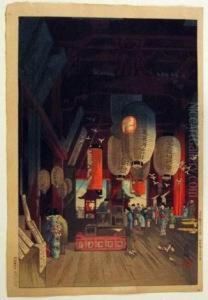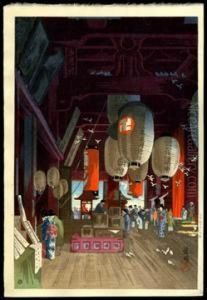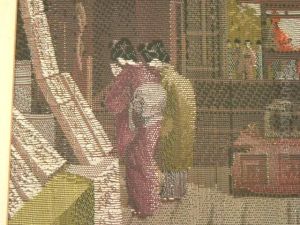Eisho Narazaki Paintings
Eisho Narazaki was a Japanese artist known for his works in the ukiyo-e genre of woodblock prints. Born in 1864, Narazaki came of age during a period of significant transition in Japan, as the country was opening up to western influences after centuries of relative isolation under the Tokugawa shogunate. This was a time when the traditional ukiyo-e art form was undergoing a transformation, with artists seeking to adapt and innovate in the face of modernization and changing tastes.
Narazaki's career is not as well-documented as some of his contemporaries, such as the great ukiyo-e masters Hiroshige and Hokusai, or later figures like Yoshitoshi and Hasui Kawase. Nevertheless, he contributed to the tail end of the ukiyo-e tradition, a genre that depicted the 'floating world' of ephemeral pleasures and urban culture in Edo-period Japan (1603-1868). His works likely included bijinga (pictures of beautiful women), landscapes, and genre scenes of everyday life, which were popular subjects in ukiyo-e prints.
During his lifetime, Japan underwent rapid modernization during the Meiji Restoration, which led to the decline of the traditional woodblock print industry. As a result, many ukiyo-e artists struggled to find their place in the new society, with some adapting their styles to cater to Western tastes and others finding patrons among the remaining samurai and merchant classes who were nostalgic for the old ways.
Eisho Narazaki passed away in 1936, leaving behind a body of work that, while perhaps not as extensive or renowned as some of his peers, nonetheless represents the persistence of traditional Japanese aesthetics into the early 20th century. His prints now serve as cultural artifacts that offer insights into the latter days of the ukiyo-e movement and the transitions that Japanese art and society were undergoing at the time.


